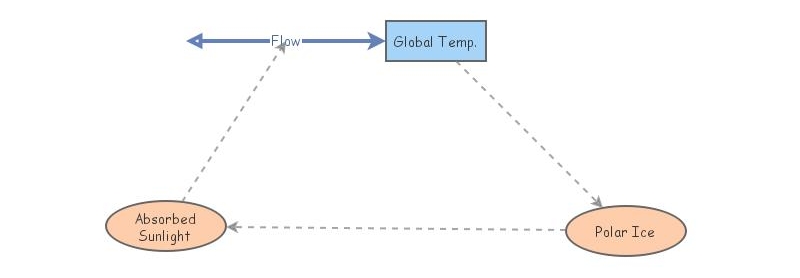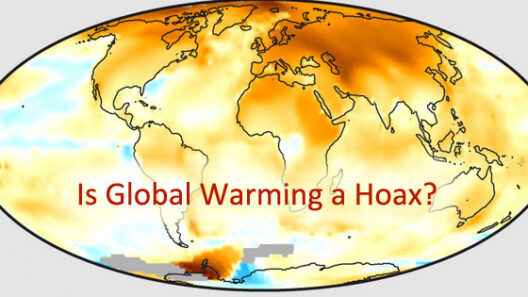Global warming is an ever-pressing concern, with its ramifications extending across ecological, economic, and societal domains. One of the critical challenges in climate science is the quantification of global warming’s multifaceted impacts. This is where proxy indicators come into play, serving as invaluable tools for researchers striving to understand climate dynamics over time. But what exactly is a proxy indicator for global warming? Let’s break it down.
A proxy indicator is essentially a substitute measure that researchers use to infer information about complex phenomena that are either difficult to measure directly or lack comprehensive datasets. Climate proxy indicators become particularly significant in the context of global warming, as they enable scientists to reconstruct past climate conditions based on easily measurable variables. These indicators act as a window into Earth’s climatic history, providing a context for today’s observations and enabling projections for future trends.
Proxy indicators can take various forms and derive from numerous contexts, each illuminating different aspects of climate change. Here are several categories of proxy indicators that scientists typically employ:
1. Biological Proxies
Biological proxies, such as tree rings, coral growth patterns, and sediment cores, provide insightful data on past climate conditions. For instance, the width of tree rings varies with the climate; a wider ring indicates a favorable growing season, while a narrow ring suggests adverse conditions. Scientists analyze these growth patterns to infer temperature and precipitation variations over decades or even centuries. Similarly, coral reefs accumulate layers of calcium carbonate that reflect historical sea surface temperatures and salinity levels. By examining these biological indicators, researchers can piece together climatic shifts and correlate them with known global warming trends.
2. Geological Proxies
Geological proxies are derived from sediments and rocks, encapsulating information from various periods of Earth’s geological history. Ice cores, for example, contain trapped air bubbles that reflect atmospheric composition from the past. By drilling into polar ice sheets, scientists can extract these cores to analyze greenhouse gas concentrations over millennia, thus illuminating the relationship between CO2 levels and global temperatures. Likewise, sediment records from lakes and oceans can reveal insights into historical climatic events and ecosystem responses. Such geological proxies are crucial for building a coherent narrative of Earth’s climatic evolution.
3. Chemical Proxies
Chemical proxies leverage the composition of specific materials to gauge past environmental conditions. One of the well-studied examples includes the analysis of stable isotopes found in marine shells and ice cores. Variations in oxygen isotope ratios, for instance, serve as a marker for temperature and ice volume changes. The isotopic composition of ancient waters can indicate whether conditions were warm or cool when the shell was formed. These chemical indicators are pivotal in understanding the nuances of climatic shifts over extensive temporal scales, thus contributing to the overall comprehension of global warming patterns.
4. Historical Records
Historical documents offer another layer of proxy evidence, providing qualitative data on climate conditions from human observations. Annals, diaries, and agricultural records can yield invaluable insights into past weather events, agricultural yields, and ecological changes. For instance, records of fruit harvests can indicate temperature variations over time, while accounts of droughts and floods can help establish patterns linked to climate variability. When analyzed alongside other proxies, these historical accounts foster a more holistic understanding of climate change and its impact on human societies.
5. Remote Sensing Data
In contemporary studies, remote sensing technology has revolutionized the way scientists monitor environmental changes. Satellites collect data on land surface temperatures, vegetation cover, and glacial mass loss, serving as proxy indicators of climate variations. For example, the shrinking of glaciers and polar ice caps directly correlates with rising global temperatures. Remote sensing allows for the observation of large-scale climatic changes, enabling efficient monitoring of trends over time. The vast datasets acquired through these technologies provide a broader perspective on global warming, uncovering patterns that may not be observable at ground level.
The amalgamation of these diverse proxy indicators facilitates a more nuanced understanding of the complexities associated with global warming. By bridging gaps in direct observations of climate phenomena, scientists can infer past temperatures, greenhouse gas concentrations, and ecological responses, all instrumental in contextualizing current global warming trajectories.
Importantly, while proxy indicators serve as essential tools in climate science, they also come with limitations. Variability in proxy responses can lead to discrepancies in data interpretation, necessitating rigorous validation and cross-referencing with multiple indicators. The reliance on proxies also raises questions regarding the accuracy of reconstructions achieved over extensive time scales. Therefore, researchers must approach these indicators judiciously, always cognizant of their inherent uncertainties.
In conclusion, proxy indicators for global warming are indispensable in deciphering the planet’s climatic past and present. By drawing from biological, geological, chemical, historical, and remote sensing data, researchers cultivate a multi-faceted understanding of climate dynamics. As global temperatures continue to rise, the ability to infer and project future climate scenarios based on these proxies is more crucial than ever. The consequences of climate change ripple through ecosystems and human civilizations alike, underscoring the importance of accurate representation and understanding of our climate’s history. Engaging with proxy indicators not only enriches our knowledge but also fortifies the urgency to address the global warming crisis with informed action and dedication.








